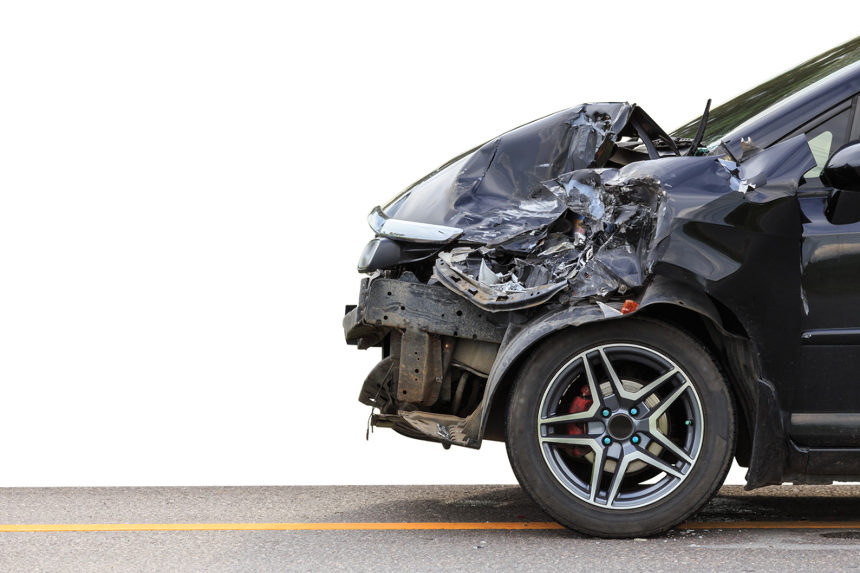Matthew and Marcia Seebachan were traveling in their Honda Fit on a 75 mph stretch of road in 2013 when a Toyota Tundra traveling in the oncoming lane hydroplaned into their path, causing them to T-bone head-on into the right front quarter of the Tundra. The impact of the collision crumpled the front of the Honda, pinning them both in the car. Another motorist rescued Marcia through the passenger window, but Matthew was trapped behind the steering wheel as flames from the ruptured fuel tank below his seat engulfed his legs and feet. They both survived but were badly injured. Matthew suffered numerous broken bones, internal injuries, and fourth-degree burns all over his lower body, which left him with irreparable nerve damage and excruciating pain. Marcia also sustained multiple internal injuries and required surgery to place a stent in her aorta.
The Seebachans had purchased the used Honda Fit four months earlier. Before buying the car, they received a CARFAX report indicating the car had not had any major maintenance or repairs. So, after the accident, they were surprised to learn the car’s previous owner had taken it to John Eagle Collision Center in Dallas to replace the roof after a hailstorm in 2012.
Further investigation of the previous repair work uncovered that the Collision Center had ignored the Honda Fit Body Repair Manual, which requires the new roof they’d installed be welded to the car. Instead, the Collision Center used a bonded adhesive to glue the roof onto the car.
The Seebachans filed a negligence lawsuit against John Eagle Collision Center for damages as a result of improper repair of their Honda. Their expert witness testified that the improperly repaired roof caused it to buckle, which led the car’s safety cage to collapse and the fuel tank to rupture. They asked for $42 million — calculated to equal 5 cents for every second of Matthew’s life expectancy.
John Eagle admitted they did not follow Honda’s specifications. In their defense, the body shop director testified that the State Farm Insurance adjuster who represented the insured directed them to use adhesive rather than spot welding. When questioned whether they were forced to follow the insurance directive rather than the manufacturer’s specifications, he said yes — if they wanted to get paid. He explained that since insurance companies pay the bills, insurance adjusters are able to dictate repair specifications. The Collision Center defended the method they used to repair the roof, arguing it was safe and that the damage to the Honda Fit was caused by the collision and could not be attributed to the roof repair.
How Would You Rule?
A jury in the District Court of Dallas awarded $41.966 million to the Seebachans. The John Eagle Collision Center was responsible for 75 percent of the judgement — nearly $31.5 million in damages. The jury attributed the other 25 percent of the blame to the Tundra driver.
In a separate case, the Seebachans sued State Farm Insurance for their role in the negligent repair. Their attorney stated, “John Eagle did not repair the subject 2010 Honda Fit to Honda’s body repair specifications due to State Farm’s instructions, threats, and/or coercion.” State Farm denied that it forced John Eagle to use deadly, dangerous, unproven, and untested adhesive rather than welds. That case was settled out of court.
—Matthew and Marcia Seebachan v. John Eagle Collision Center, 2017
This article is featured in the November/December 2019 issue of The Saturday Evening Post. Subscribe to the magazine for more art, inspiring stories, fiction, humor, and features from our archives.
Featured image: Shutterstock.com
Become a Saturday Evening Post member and enjoy unlimited access. Subscribe now




Comments
This is one of the most heinous cases of greed and fraud I’ve ever heard of, starting with the fraudulent CARFAX report. The Seebachan’s never would have bought this car to begin with had IT not been falsified, resulting in the irreparable damage to them as described.
I agree with District Court of Dallas in their awarding them almost $42 million, holding John Eagle and the Tundra driver responsible. State Farm of course, AND the individual agent that dealt with Eagle regarding this specific car must be sued also; not to mention CARFAX that lit the match for this tragedy in the first place!